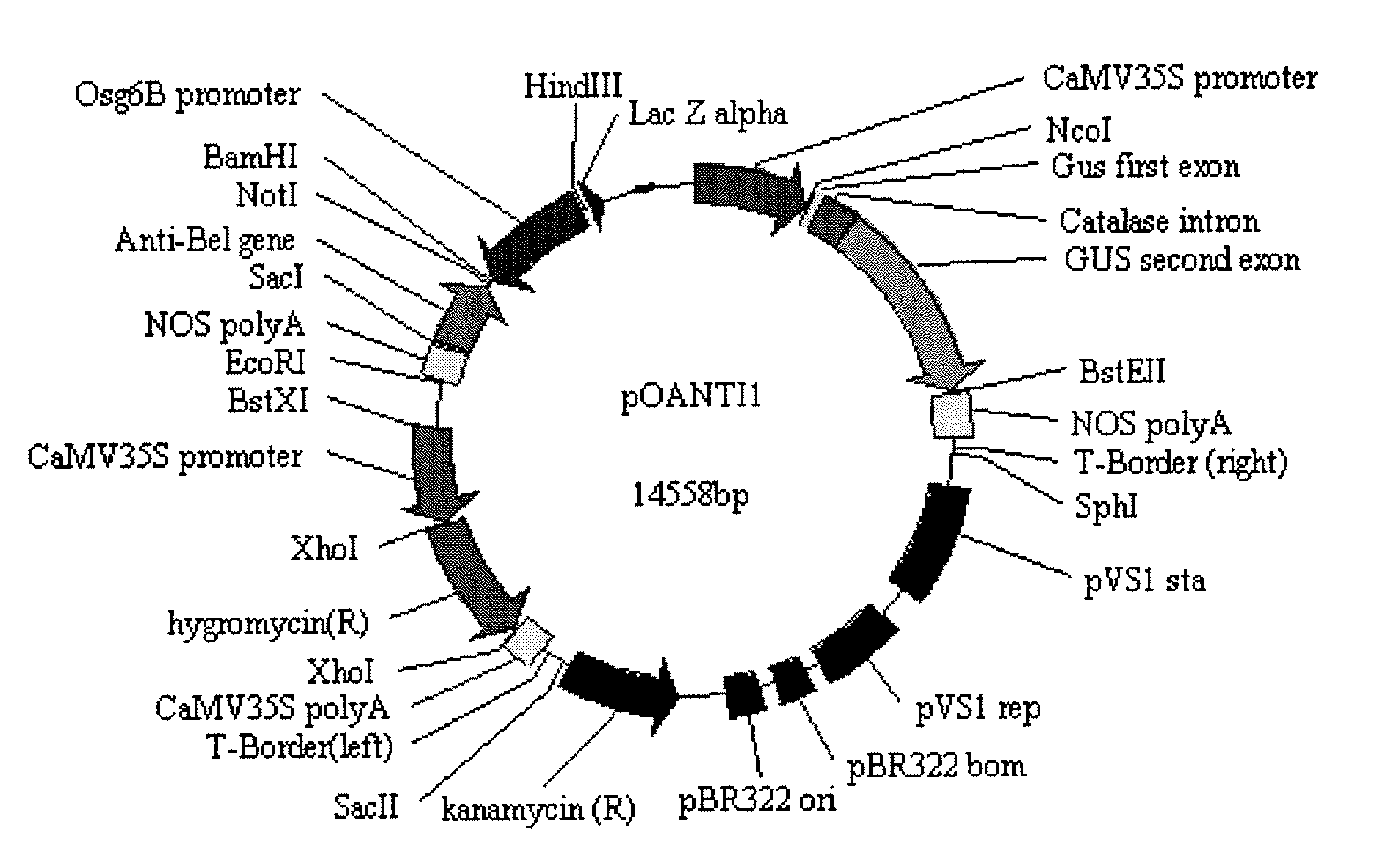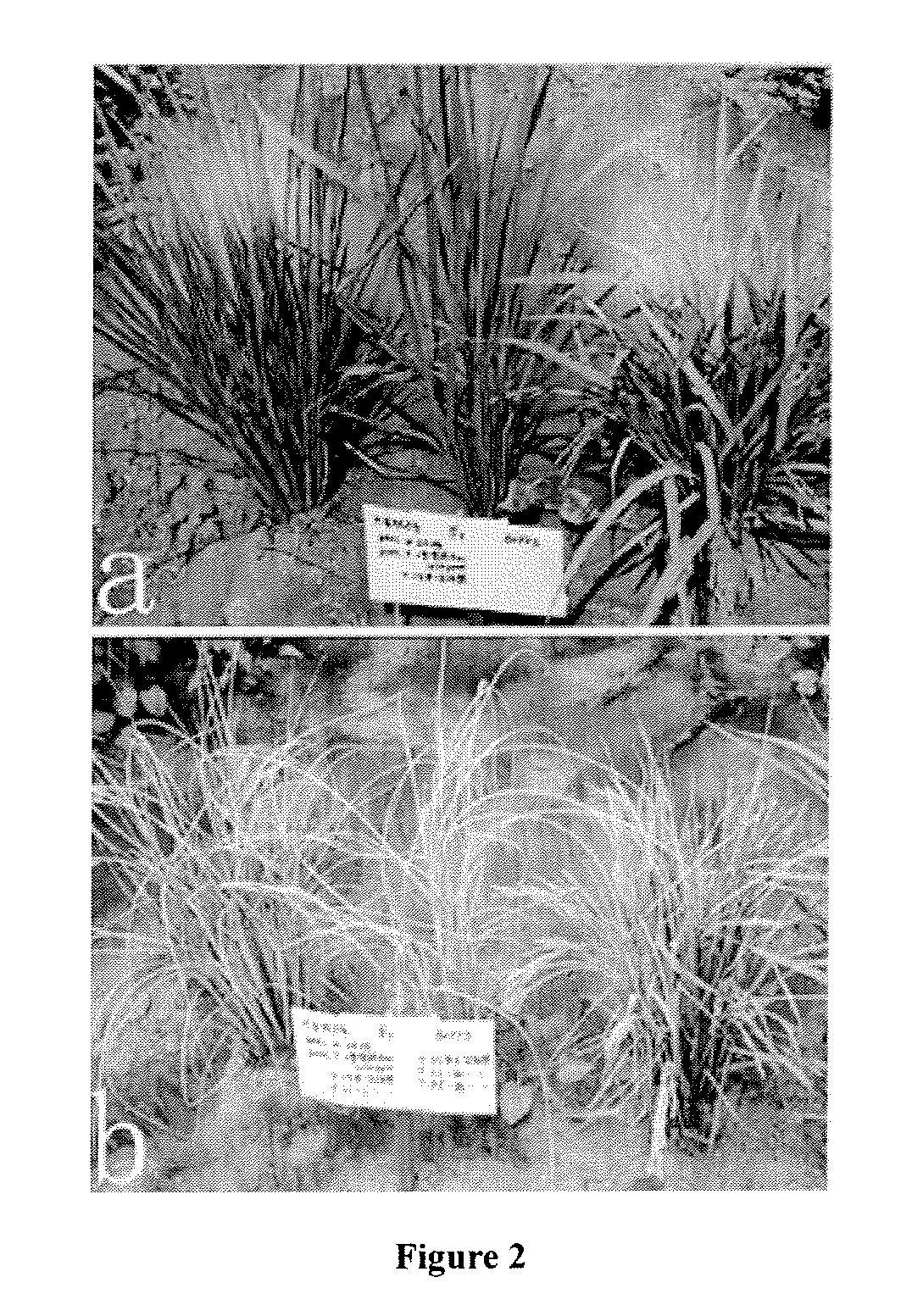The Rice Bentazon and Sulfonylurea Herbicide Resistant Gene Cyp81a6
a technology of sulfonylurea and bentazon, applied in the field of gene engineering, can solve the problems of high risk, large loss of seed or field production, and easy sterility of this male sterile lin
- Summary
- Abstract
- Description
- Claims
- Application Information
AI Technical Summary
Benefits of technology
Problems solved by technology
Method used
Image
Examples
example 1
Fine Mapping and Cloning of Target Gene
[0064]1. Fine Mapping of Bentazon Sensitive Lethal Gene Bel in Indica Mutant 8077S
[0065]1.1 Mapping Population
[0066]The mapping population used in this Example was consisted of F2 recessive individual plants. While constructing, firstly, make use of Peiai 64 backcrossing line that carries the recessive bel locus (hereinafter referred to as Peiai 64S) to cross with 93-11, a wild-type thermo-sensitive male sterile restorer line (bred by Agricultural Science Research Institute of Li-Xia-He District, Jiangsu Province) for obtaining F1. Then, reproduce F2 offspring selfing from F1 generation, with the population up to 1,000 plants in total. When the seedlings grow to 3-4 leaves after sowing, treat all F2 plants by cutting leaves one by one (cut about 1 cm from the leaf apex) and smearing with bentazon (the 25% bentazon aqueous produced by Jiangsu Sword Agrochemicals Co., Ltd.) at a concentration of 1250 mg / L, three leaves per plant. Then, select 231...
example 2
The Targeted Mutation and Genetic Improvement of Rice Wx Gene
[0087]Two wild-type alleles Wxa and Wxb in rice cultivars are widely distributed on the Wx locus. Among which, Wxa is the feature of indica type rice and its expression activity on the RNA and protein level is 10 times stronger than the Wxb's. Its high level of expression results in high amylose content and makes the cooked rice hard and loose with a bad taste. While Wxb mainly exists in the japonica rice. Its low level of expression results in typical japonica-type amylose content at a middle level. Its rice after cooking is usually soft and delicious. The previous investigation indicated that the major difference between these two alleles of Wxa and Wxb on the expressive activity is that there is a G to T substitution in the 5′-splicing site of the leading intron of the latter (Cheng Shijun etc. 2001). This substitution results in decrease of splicing efficiency of the leading intron in the pre-mRNA of Wxb, and thus caus...
example 3
Use the Double RCOs-Mediated Co-Modification Technology to Investigate the Biological Function of Rice Cyp8 A5, Cyp81A7 and Cyp81A8 and Other Unknown Genes
[0089]In theory, the gene targeted modification technology is precisely proceeded to aim at target gene locus. As it is known that, the encoded products of Cyp81A5, Cyp81A7 and Cyp81A8 genes are a category of cytochrome P450 monooxygenase proteins and the rice P450 is a huge gene family. For instance, only one subspecies of indica type rice has 454 p450 family members. This gene family possesses a highly conserved heme binding motifs (F—X—X-G-X—R—X—C—X-G) on the protein sequence, especially their core residue of cystine, which is already confirmed to be an extremely important determinant to the biological function of the P450 gene. Therefore, it can be used as an ideal mutation target.
[0090]From the existing rice P450 database (http: / / dmelson.utmen.edu / cytochromep 450.html), it is clear that the amino acid sequences of the heme bi...
PUM
| Property | Measurement | Unit |
|---|---|---|
| concentration | aaaaa | aaaaa |
| concentration | aaaaa | aaaaa |
| total volume | aaaaa | aaaaa |
Abstract
Description
Claims
Application Information
 Login to View More
Login to View More - R&D
- Intellectual Property
- Life Sciences
- Materials
- Tech Scout
- Unparalleled Data Quality
- Higher Quality Content
- 60% Fewer Hallucinations
Browse by: Latest US Patents, China's latest patents, Technical Efficacy Thesaurus, Application Domain, Technology Topic, Popular Technical Reports.
© 2025 PatSnap. All rights reserved.Legal|Privacy policy|Modern Slavery Act Transparency Statement|Sitemap|About US| Contact US: help@patsnap.com



